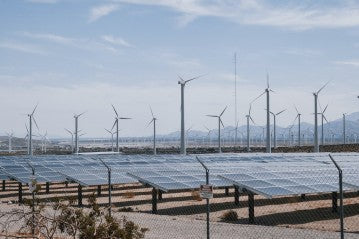
As the demand for sustainable energy solutions continues to rise, solar power has emerged as a popular choice for environmentally conscious individuals and businesses. Solar charge controllers play a vital role in efficiently managing the charging process of solar batteries, ensuring optimal performance and prolonging their lifespan. In this guide, we will explore the essential settings of a solar charge controller to help you make informed decisions when purchasing and configuring your solar energy system.
1. Parameters Understanding of Setting a Solar Charge Controller
To gain a deeper understanding of solar charge controller settings, let's explore the following parameters:
a) System Voltage:
The system voltage determines the compatibility of your solar charge controller with your solar panels and batteries. It is essential to choose a charge controller that supports the system voltage of your solar energy system for seamless operation.
b) Maximum Charging Current:
The maximum charging current specifies the highest current that the charge controller can handle. This value should align with the total current output of your solar panels to prevent overloading and ensure efficient charging.
c) Charge Controller Capacity:
The charge controller's capacity refers to its maximum current-handling capability. It is advisable to select a charge controller with a capacity slightly higher than your solar panel's total current output to accommodate any future expansions or increased power requirements.
d) Battery Overcharging Protection Voltage:
The overcharging protection voltage safeguards your batteries by cutting off the charging process when they reach the desired voltage. This prevents excessive charging, which can cause electrolyte loss and reduce battery lifespan. Consult battery manufacturer specifications to determine the appropriate voltage for your battery type.
e) Battery Overdischarging Protection Voltage:
The overdischarging protection voltage prevents the battery from discharging beyond a critical voltage level, preserving its health and capacity. Setting this parameter correctly is crucial to avoid irreversible damage to the battery. Refer to the battery manufacturer's recommendations for the optimal overdischarging protection voltage.
f) Battery Floating Charging Voltage:
The floating charging voltage maintains the battery's charge at an optimal level once it reaches its full capacity. It helps counteract self-discharge and ensure the battery remains ready for use. Set the floating charging voltage within the manufacturer's specified range to extend the battery's lifespan and maximize its performance.
2. How to Set Solar Charge Controller Charge
Setting the charge parameters of your solar charge controller is crucial for maximizing the efficiency of your solar system. Here are the key factors to consider:
a) System Voltage:
The first step in setting up your solar charge controller is determining the system voltage. This refers to the voltage of your solar panels and batteries, which is typically either 12V, 24V, or 48V. Make sure to choose a charge controller that matches your system voltage to ensure compatibility and efficient charging.
b) Maximum Charging Current:
The maximum charging current determines the rate at which your batteries receive charge. It is important to select a charge controller capable of handling the maximum current output of your solar panels. Exceeding the controller's capacity may lead to inefficiencies or potential damage to the controller.
c) Charge Controller Capacity:
Consider the capacity of the solar charge controller in relation to your overall system requirements. It is advisable to choose a charge controller with a capacity slightly higher than the total current output of your solar panels to allow for future expansion and avoid overloading.
d) Battery Overcharging Protection Voltage:
To prevent overcharging, a solar charge controller allows you to set the voltage at which the charging process should stop. It is crucial to configure this parameter correctly, as overcharging can significantly reduce battery lifespan. Consult the manufacturer's recommendations or seek professional advice to determine the ideal overcharging protection voltage for your specific battery type.
e) Battery Overdischarging Protection Voltage:
Similarly, a solar charge controller allows you to set the voltage at which the battery should be protected from excessive discharge. This parameter ensures that the battery does not drop below a critical voltage level, which can lead to permanent damage. Consider the recommended overdischarging protection voltage for your battery and adjust the settings accordingly.
f) Battery Floating Charging Voltage:
The floating charging voltage refers to the voltage at which the battery is maintained after it has reached its full charge. This feature helps to prevent self-discharge and maintain the battery's optimal state of charge. Set the floating charging voltage within the manufacturer's specified range for your battery type to ensure its longevity.
3. Solar Charge Controller Voltage Setting
Configuring the solar charge controller voltage is essential to ensure compatibility and efficient energy conversion. Make sure to select a charge controller that supports the voltage requirements of your solar panels and batteries. Verify the system voltage and adjust the charge controller settings accordingly for optimal performance.
4. Solar Charge Controller Setting Steps
To set up your solar charge controller effectively, follow these steps:
a) Determine the system voltage and ensure the charge controller matches it.
b) Calculate the maximum charging current based on your solar panels' output.
c) Choose a charge controller with a capacity slightly higher than the total current output of your solar panels.
d) Set the overcharging protection voltage to prevent battery damage from excessive charging.
e) Configure the overdischarging protection voltage to safeguard the battery from critical voltage depletion.
f) Set the floating charging voltage within the manufacturer's specified range for optimal battery maintenance.
Conclusion
Configuring the settings of your solar charge controller is vital for optimizing the performance and lifespan of your solar energy system. By understanding the parameters involved and following the appropriate steps, you can ensure compatibility, prevent battery damage, and maximize the efficiency of your solar charging process. As always, consult the manufacturer's guidelines and seek professional advice when necessary to make informed decisions regarding your solar charge controller settings. Embrace the power of solar energy and contribute to a greener future.


0 comments